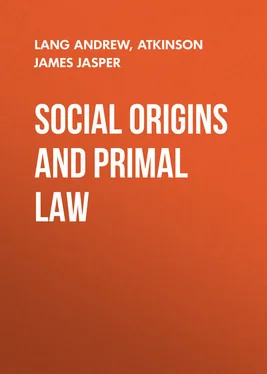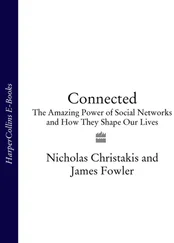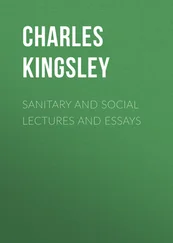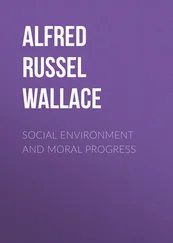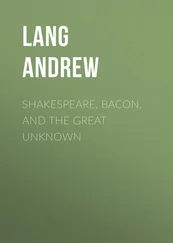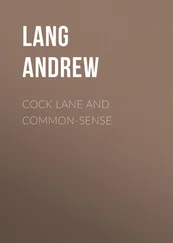Andrew Lang - Social Origins and Primal Law
Здесь есть возможность читать онлайн «Andrew Lang - Social Origins and Primal Law» — ознакомительный отрывок электронной книги совершенно бесплатно, а после прочтения отрывка купить полную версию. В некоторых случаях можно слушать аудио, скачать через торрент в формате fb2 и присутствует краткое содержание. Жанр: foreign_antique, foreign_prose, на английском языке. Описание произведения, (предисловие) а так же отзывы посетителей доступны на портале библиотеки ЛибКат.
- Название:Social Origins and Primal Law
- Автор:
- Жанр:
- Год:неизвестен
- ISBN:нет данных
- Рейтинг книги:3 / 5. Голосов: 1
-
Избранное:Добавить в избранное
- Отзывы:
-
Ваша оценка:
- 60
- 1
- 2
- 3
- 4
- 5
Social Origins and Primal Law: краткое содержание, описание и аннотация
Предлагаем к чтению аннотацию, описание, краткое содержание или предисловие (зависит от того, что написал сам автор книги «Social Origins and Primal Law»). Если вы не нашли необходимую информацию о книге — напишите в комментариях, мы постараемся отыскать её.
Social Origins and Primal Law — читать онлайн ознакомительный отрывок
Ниже представлен текст книги, разбитый по страницам. Система сохранения места последней прочитанной страницы, позволяет с удобством читать онлайн бесплатно книгу «Social Origins and Primal Law», без необходимости каждый раз заново искать на чём Вы остановились. Поставьте закладку, и сможете в любой момент перейти на страницу, на которой закончили чтение.
Интервал:
Закладка:
J. J. Atkinson
Social Origins and Primal Law
Dear Annie,
As you first pointed out to me the facts which are the germ of my Theory of the Origin of Totemism, you are one cause of my share in this book. The other is affection for the memory of the author of 'Primal Law.'
Yours always, A. LANG.St. Andrews:
Feb. 13, 1903.
INTRODUCTION
The portion of this book called 'Primal Law' is the work of the late Mr. James Jasper Atkinson. Born in India, of Scottish parents (his mother being the paternal aunt of the present editor), Mr. Atkinson was educated (1857-1861) at Loretto School, then managed by Messrs. Langhome. While still young he settled on certain stations in New Caledonia bequeathed to him by his father, and, except for visits to Australia and a visit to England, he lived and died in the French colony. His ingenious mind was much exercised by the singular laws and customs of the natives of the New Caledonian Archipelago and the adjacent isles. These peoples have been little studied by competent European observers – that is, in New Caledonia. Mr. Atkinson wrote an account of native manners before he had any acquaintance with the works of modern anthropologists, such as Mr. Tylor, Mr. McLennan, Lord Avebury, and others. To these he later turned his attention; he joined the Anthropological Institute, and, in the course of study and observation, he discovered what he conceived to be the 'Primal Law' and origin of morality, as regards the family. In his last illness, in 1899, he was most kindly attended by Commander John Haggard, R.N., then Her Majesty's Consul in New Caledonia. Mr. Atkinson's mind, in his latest moments, was occupied by his anthropological speculations, and, through Mr. Haggard, he sent his MS. to his cousin and present editor. I have given to it the last cares which the author himself would have given had he lived. But I have also taken the opportunity to review, in the following pages, introductory to 'Primal Law,' the present state of the discussion as to the beginnings of the rules regulating marriage among savages.
The discussion is now nearly forty years old, if we date it from the appearance of Mr. J. F. McLennan's Primitive Marriage in 1865. Yet, in spite of the speculations of some and the explorations of other distinguished students, the main problems are still in dispute. Was marriage originally non-existent? Was promiscuity at first the rule, and, if so, what were the origins, motives, and methods of the most archaic prohibitions on primitive license? Did man live in 'hordes,' and did he bisect each 'horde' into exogamous and intermarrying moieties, and, if he did, what was his motive? Are the groups and kindreds commonly styled 'totemic' earlier or later than the division into a pair of moieties or 'phratries'? Do the totem-kins represent the results of an early form of exogamous custom, or are they additions to or consciously arranged subdivisions of the two exogamous moieties? Is a past of 'group marriage' or 'communal marriage' proved by the terms for human relationships employed by many backward races, and by survivals in manner and custom?
These are among the questions examined in the introductory chapters that may be read either before or after Mr. Atkinson's Primal Law . To him I am indebted for the conception of sexual jealousy as a powerful element in the evolution of exogamy.
Since my attention was first directed to these topics, I have felt that a clear and consistent working hypothesis of the origin of totemism was indispensable, and such an hypothesis, with a criticism of other extant theories, is here offered. Throughout I have attempted to elucidate and bring into uniformity the perplexing and confused special terms employed in the discussion. Here it should be explained that by 'marriage' in this work I mean permanent cohabitation of man and woman, sanctioned by tribal custom, and usually preceded by some rite or initiation which does not prelude to casual amours. By family or fire circle I mean the partners to this permanent cohabitation, their offspring, and such kinsfolk by blood or affinity as may be members of their camp. In the first sentence of the book I speak of the family as 'most ancient and most sacred,' and I do so deliberately. The primitive association described I take, with Mr. Darwin and Mr. Atkinson, to be 'most ancient,' and to be the germ of the historic family, which is 'most sacred.' But to 'sacred' when I apply the word to the primitive fire-circle I give no religious sense, such as the Greek hearth enjoyed under Hestia, youngest and oldest daughter of Zeus. I mean that the rules given to the primitive fire-circle by the sire were probably the earliest and the most stringent, though not yet sanctioned by a tabu or a goddess.
Such a small circle, and not a promiscuous horde or commune, I conceive, with Mr. Darwin and Mr. Atkinson, to have been the earliest form of human society.
The book deals only with the institutions of races certainly totemistic, and mainly with the Australian and North American tribes, which present totemism in the most archaic of its surviving forms. But little is said, and that tentatively, on the question as to whether or not the ancestors of the great civilised peoples, ancient and modern, have passed through the stage of totemic exogamy, as our evidence is weak and disputable. Too late for citation in the body of the book I read Mr. A. H. Keane's theory of the origin of totemism. 1 1 Man, Past and Present , Cambridge, 1899, pp. 396, 397.
Mr. Keane's theory is much akin to my own as it stood in Custom and Myth (1884) and to that of Garcilasso de la Vega, the oldest of all. Garcilasso (1540-1616), an Inca on the mother's side, describing the animal and plant worship of the low races in the Inca Empire, says 'they only thought of making one differ from another and each from all.' 2 2 Royal Commentaries , i. 47.
But it may be that he had not totemism in his mind; the passage is not too explicit.
Mr. Keane says: 'And thus the family, the initial unit, segments into a number of clans, each distinguished by its totem, its name, its heraldic badge – which badge, becoming more and more venerated from age to age, acquires inherited privileges, becomes the object of endless superstitious practices, and is ultimately almost deified… Its origin lies behind all strictly religious notions, and it was at first a mere device for distinguishing one individual from another, one family or clan group from another. 3 3 The Import of the Totem , Amer. Ass., Detroit, 1897.
Thus among the Piaroas of the Orinoco below San Fernando de Atabapo the belief holds that the tapir, originally the totem of the clan, has become their ancestor, and that after death the spirit of every Piaroa passes into a tapir; hence they never hunt or eat this animal, and they also think all the surrounding tribes are in the same way each provided with their special animal fore-father. It is easy to see how such ideas tend to cluster round the clan 4 4 M. Chaffanjon, Tour du Monde , 1888, lvi. 348.
or family totem, at first a distinguishing badge, later a protecting or tutelar deity of Protean form. It should be remembered that the personal or family name precedes the totem, which grows out of it, as seen by the conditions still prevailing amongst the very lowest peoples (Fuegians, Papuans of Torres Strait 5 5 Ethnology , pp. 9, 11.
).'
I am indebted in various ways to assistance, chiefly in the interchange of ideas, from Mr. A. C. Haddon, Mr. G. L. Gomme, Miss Burne, and Mr. A. E. Crawley, author of The Mystic Rose . Mr. Crawley kindly read the book, or most of it, before publication, and collaborated most efficiently in the way of suggesting objections. It is not implied that any of these students accept the ideas of the two authors. I regret that it has been found impossible to wait for the publication of a new book by Mr. A. W. Howitt, from which we may expect much new information.
Читать дальшеИнтервал:
Закладка:
Похожие книги на «Social Origins and Primal Law»
Представляем Вашему вниманию похожие книги на «Social Origins and Primal Law» списком для выбора. Мы отобрали схожую по названию и смыслу литературу в надежде предоставить читателям больше вариантов отыскать новые, интересные, ещё непрочитанные произведения.
Обсуждение, отзывы о книге «Social Origins and Primal Law» и просто собственные мнения читателей. Оставьте ваши комментарии, напишите, что Вы думаете о произведении, его смысле или главных героях. Укажите что конкретно понравилось, а что нет, и почему Вы так считаете.
